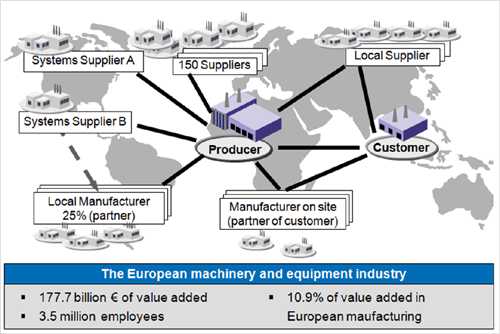AT&T sets the benchmark for virtualised network services
Today, open platform concepts to provide network connectivity with value-added services are being increasingly backed and promoted by telecoms providers and suppliers. Ovum saw 2015 as “the year of proof of concepts and trials for many large telco providers”. But despite being in development and trials for a number of years, the industry is standing at the floodgates of a plethora of new software-defined network (SDN)-backed virtualisation services being rolled out to market.
Transitioning from hardware to software-based architecture is a major shift in network designs and an increasing number of businesses are seeking to leverage new technologies (SDN/NFV, virtualisation, and cloud) to address customers’ need for more agile services and pay-as-you-go consumption models.
 |
Roman Pacewicz, senior vice president of marketing and global strategy at AT&T, says networking is fundamentally changing. “Things are much more dynamic now. It used to be much more static and now we’re connecting anything and everything. We used to connect hundreds of locations for a customer and now it’s hundreds of thousands of locations.” The shift towards a software-based network began a few years ago when AT&T saw the exponential growth in traffic on its wireless and broadband networks. “Networks are chewing up bandwidth at an extremely high rate,” says Pacewicz. “Over the last eight years, there’s been a 150,000% increase in our mobile data network traffic.” To satisfy demand and scale its capacity, that’s when AT&T’s software-centric evolution began. “We needed to change the network and we’re on a long-term strategy of moving the network from a hardware-based to a software-based architecture.” |
Network platform goes global
AT&T launched its Network on Demand (NoD) platform in 2015 with its Switched Ethernet on Demand service in 170 metro markets. AT&T claims it reduced the installation interval for switched Ethernet from 45-60 days to as little as five days. A Dedicated Internet on Demand service was added to the platform around four months ago. Despite these solutions being adopted by over 1,200 companies its adoption has been restricted to just US rollouts. AT&T’s third phase of its managed portfolio, Virtualised Network Functions on Demand, has brought this NoD platform onto a global scale.
The new Network Functions on Demand service is now available in 76 countries, which represents “one of the first large-scale, global deployments by a tier-one carrier for a service of this type,” Mike Sapien, principal analyst, enterprise services at Ovum, told Global Telecoms Business. “The move is another sign of AT&T’s ongoing strategy for faster service deployment of its network platform and service expansion outside its traditional incumbent US footprint.”
Designed and deployed on its integrated cloud platform and leveraging SDN/network function virtualisation (NFV) technologies to reduce hardware requirements so businesses can create a simple, more agile network experience, AT&T’s third service uses a single universal piece of equipment at a customer’s premises to deliver virtualised functions and enables businesses to flexibly manage their network services. Pacewicz declares: “Expensive, proprietary equipment like routers and WANs, which need to be consistently wired, managed, repaired and replaced at these sites, are now a thing of the past.”
“It’s the cloud in a box,” he says, which enables customers to download and mix-and-match different equipment, similar to downloading smartphone apps. “It offers more flexibility and helps with the total cost and complexity of ownership at sites. What we’ve done is create a new business model, Instead of deploying all the hardware individually, you deploy one universal box, which you manage everything from.”
He adds that installation intervals will now be further reduced from “days to minutes”. The service covers additional network functions that enhance security, IP routing, WAN resource optimisation and is transparent and scalable.
The first capabilities on offer on the carrier’s Network Functions on Demand service come from Juniper Networks (virtual routing), Cisco (virtual router), Fortinet (virtual security) and Riverbed (virtual WAN optimisation). “We are looking to add more partners to work with,” admits Pacewicz. “That’s the beauty of this model, the platform allows us to snap in a host of other virtualisation functions.” AT&T will expand into more countries and hints that the company is “developing customer-specific functions”.
Its service also simplifies the process of buying and adding network functions, which are “expensive, cumbersome and take too long”. Businesses no longer need to buy multiple appliances to run specific networking functions as the new service has reduced hardware requirements to create a simple, more agile network experience.
Sapien adds: “The use of SDN/NFV technologies with cloud- based services is “democratising” managed services among providers as providers of any size can now offer global managed services, leveraging cloud and virtualised services that include many managed services that traditionally required hardware appliances on premises or global capital intensive, infrastructure investments.”
Smaller providers can now compete and collaborate in offering advanced managed services globally: “A global, virtual ‘service war of the worlds’ in my view,” Sapien tells GTB.
One enterprise that says the service has successfully transformed its business and agrees with the total cost of ownership improvement is Fisher & Paykel. “We can launch, change and manage network functions in our offices around the world quickly and easily,” says Jon White, general manager of information technology at the global appliance manufacturing company.
“We often talk about simplifying our on-site network infrastructure upgrades and deployments – this solution ticks that box. It will not only provide us with visibility and control to drive down IT and operations costs, but also help us quickly respond to evolving business needs.”
Cloud zones and software migration
Open-source software is where the industry is heading and more cloud zones will enable AT&T to roll out this service even faster. Last year, AT&T created 74 cloud zones in its Europe and US central offices.
Dedicated business-grade intranet and wired routers on premises were all virtualised in these cloud zones. “We’re continually growing and AT&T will have 105 cloud zones by the end of this year,” Pacewicz tells GTB.
AT&T is looking to increase the pace in which it its migrating software control over its network. The carrier is looking to push its network into software from the 5.7% reached at the end of 2015, to 30% by the end of 2016. By 2020, AT&T plans to virtualise and control 75% of its network on SDN architecture.

Last year, 60% of all AT&T’s IT systems had transitioned to cloud and virtualisation. “By the end of 2015, 400,000 processor cores were running our cloud IT apps, operating 50% more efficiently than on dedicated hardware,” says Pacewicz. By the end of this year, AT&T is aiming for migration figures to be 80%.
In the wake of the Network Functions on Demand rollout, Verizon announced the launch of its Virtual Network Services (VNS) and SoftBank partnered with Cradlepoint to commercially promote WhiteCloud One Layer, a cloud-based WAN service that utilises SDN and network service virtualisation technology.
With more players deploying new virtualised managed services to market in the same week in July, 2016 is certainly being seen as the start of something special for the virtualisation evolution.
Ovum predicts more services will be rolled out from less traditional providers, such as software-as-a-service (SaaS), over-the-top (OTT) and web-centric providers. “The digital transformation of business processes will be a key strategic priority for enterprises over the next few years. IDC is projecting that 80% of enterprises will have implemented a “cloud first” software-driven digital strategy by 2020.
“AT&T is the first service provider to offer a cloud-based virtualized global platform and is on the forefront of this movement by leveraging software-defined virtual workloads in the cloud and network fabric, to dramatically improve service delivery and flexibility,” Courtney Munroe, group vice president of worldwide telecommunications research at IDC, said to GTB.
Further virtualised managed services launches will no doubt continue into 2017 but a big challenge facing telecoms operators and vendors involves retraining their workforces in terms of the ongoing migration towards virtualised platforms using NFV, SDN and cloud technologies.
- Global Telecom Business -




